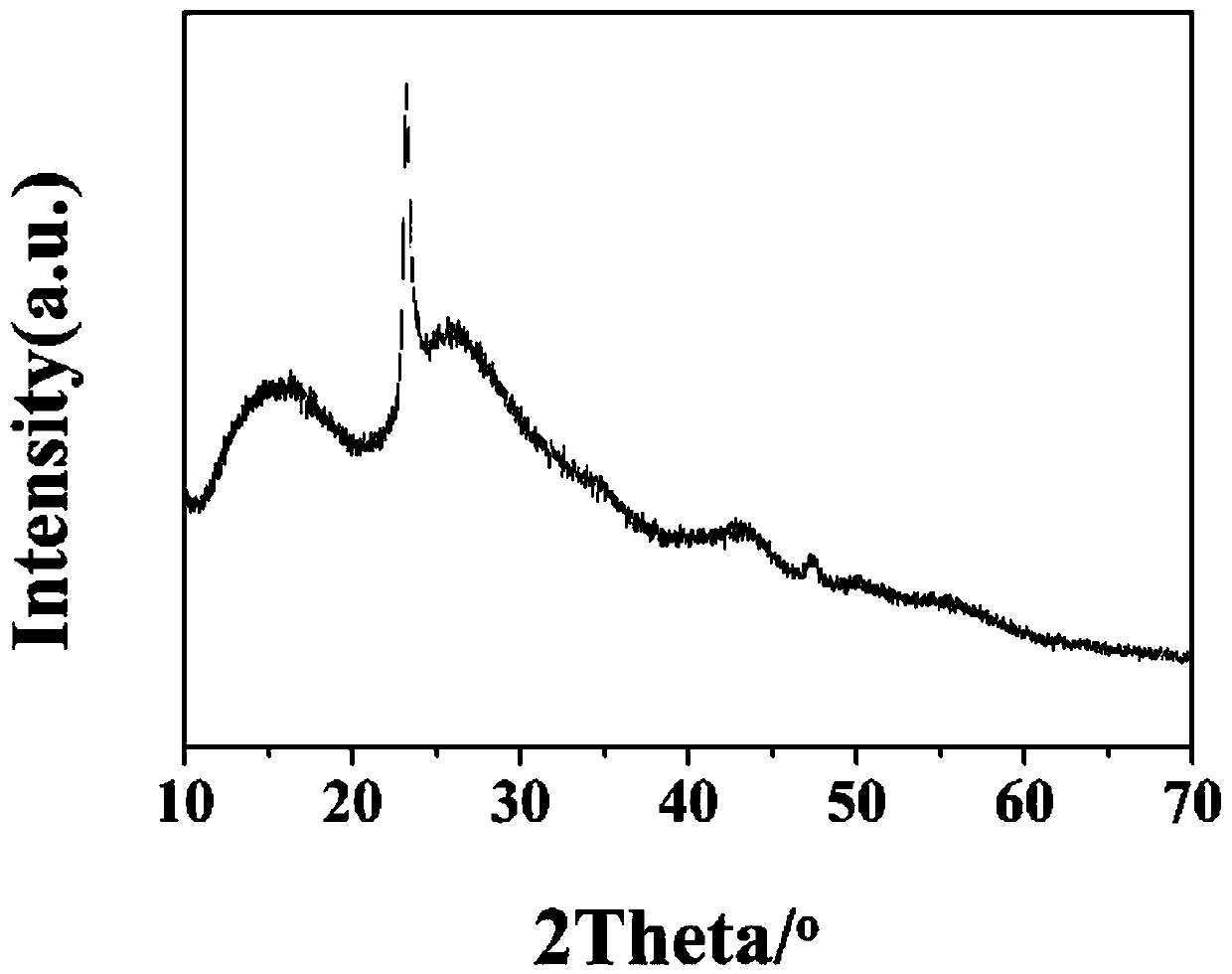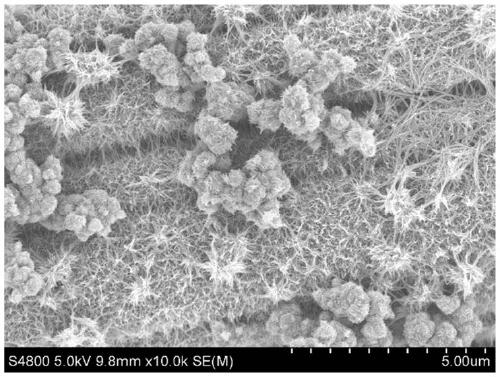Preparation method for W18O49 self-supporting electrode material grown on carbon cloth surface in situ
A self-supporting electrode, in-situ growth technology, applied in the direction of electrodes, electrode shapes/types, chemical instruments and methods, etc., can solve the problems of mismatching auxiliary equipment in the pH range, unfavorable large-scale production, and reducing the overall performance of the electrolytic cell, etc. Achieve the effect of short preparation cycle, low cost and mild conditions
- Summary
- Abstract
- Description
- Claims
- Application Information
AI Technical Summary
Problems solved by technology
Method used
Image
Examples
Embodiment 1
[0028] 1) First immerse the carbon cloth with a length of 1 cm and a width of 4 cm in acetone for 30 minutes, then place the treated carbon in a 3 mol / L HCl solution for 30 minutes, then use pure water for 30 minutes, and finally Place it in absolute ethanol for 30 minutes of ultrasonic treatment, and finally continue to rinse with absolute ethanol for 5 times;
[0029] 2) will analyze pure tungsten source WCl 6 Add a volume ratio of absolute ethanol: isopropanol: n-butanol = 1:0.5:0.5 mixed alcohol to make a 0.05mol / L solution A;
[0030] 3) Add analytically pure ethylenediamine and citric acid to solution A according to the ratio of ethylenediamine, citric acid and tungsten source in the amount of 0.05:0.05:1, magnetically stir for 30 minutes, and ultrasonically treat for 10 minutes to obtain solution B;
[0031] 4) Pour solution B into a polytetrafluoroethylene-lined autoclave at a volume filling ratio of 40%, and put the treated carbon cloth into the polytetrafluoroethyle...
Embodiment 2
[0037] 1) First immerse the carbon cloth with a length of 1 cm and a width of 7 cm in acetone for 30 minutes, then place the treated carbon in a 4 mol / L HCl solution for 20 minutes, then use pure water for 20 minutes, and finally Place it in absolute ethanol for ultrasonic treatment for 20 minutes, and finally rinse with absolute ethanol for 5 times;
[0038] 2) Will analyze pure tungsten source W(CO) 6 Add a volume ratio of absolute ethanol: isopropanol: n-butanol = 1:0.3:0.6 mixed alcohol to make a 0.1mol / L solution A;
[0039] 3) Add analytically pure ethylenediamine and citric acid into solution A according to the ratio of ethylenediamine, citric acid and tungsten source in the amount of 0.06:1:1, magnetically stir for 30 minutes, and ultrasonically treat for 5 minutes to obtain solution B;
[0040] 4) Pour solution B into a polytetrafluoroethylene-lined autoclave at a volume filling ratio of 50%, and put the treated carbon cloth into the polytetrafluoroethylene reactor con...
Embodiment 3
[0045] 1) First immerse the carbon cloth with a length of 1 cm and a width of 6 cm in acetone for 30 minutes, then place the treated carbon in a 3 mol / L HCl solution for 30 minutes, then use pure water for 30 minutes, and finally Place it in absolute ethanol for 30 minutes of ultrasonic treatment, and finally continue to rinse with absolute ethanol for 5 times;
[0046] 2) will analyze pure tungsten source W(C 2 h 5 O) 6 Add a volume ratio of absolute ethanol: isopropanol: n-butanol = 1:0.2:0.8 mixed alcohol to make a 0.05mol / L solution A;
[0047] 3) Add analytically pure ethylenediamine and citric acid to solution A according to the ratio of ethylenediamine, citric acid and tungsten source in the amount of 0.1:0.1:1, stir magnetically for 50 minutes, and sonicate for 8 minutes to obtain solution B;
[0048] 4) Pour solution B into a polytetrafluoroethylene-lined autoclave with a volume filling ratio of 60%, and put the treated carbon cloth into the polytetrafluoroethylene...
PUM
 Login to View More
Login to View More Abstract
Description
Claims
Application Information
 Login to View More
Login to View More - R&D
- Intellectual Property
- Life Sciences
- Materials
- Tech Scout
- Unparalleled Data Quality
- Higher Quality Content
- 60% Fewer Hallucinations
Browse by: Latest US Patents, China's latest patents, Technical Efficacy Thesaurus, Application Domain, Technology Topic, Popular Technical Reports.
© 2025 PatSnap. All rights reserved.Legal|Privacy policy|Modern Slavery Act Transparency Statement|Sitemap|About US| Contact US: help@patsnap.com


